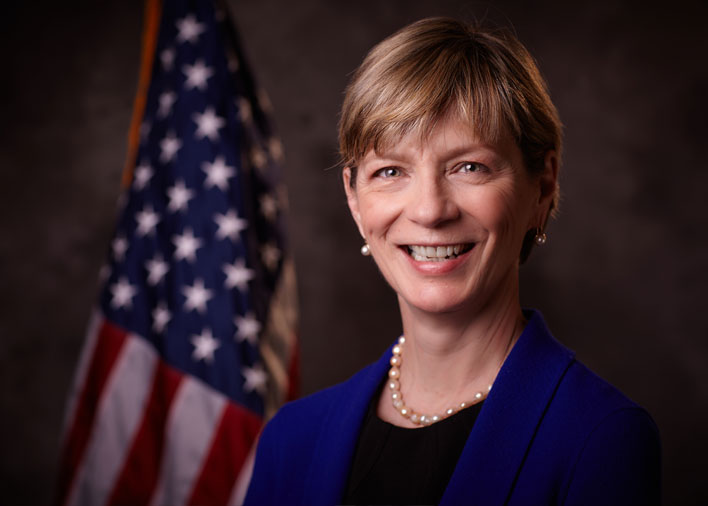BOSTON— Opioid-related overdose deaths in Massachusetts declined by an estimated 10 percent in the first nine months of this year compared to the first nine months of 2016, according to the third quarterly opioid-related overdose deaths report of 2017 released today by the Massachusetts Department of Public Health (DPH).
It is the second consecutive quarterly report estimating a decline in the number of opioid-related overdose deaths. The report also found that the percentage of opioid-related overdoses that have resulted in deaths has decreased year over year.
“This new report shows some trend lines that are moving in the right direction as we work to fight the opioid and heroin epidemic in Massachusetts, but there are still too many people dying from overdoses,’’ said Governor Charlie Baker. “Our administration will continue efforts to combat this public health epidemic that is devastating families in every corner of the Commonwealth, and looks forward to introducing new proposals in the near future and working with the Legislature to pass meaningful reform to strengthen our efforts from prevention to recovery.”

According to the report, fentanyl continues to be a major factor fueling the opioid crisis. The rate of fentanyl present in the toxicology of opioid-related overdose deaths continues to rise, reaching 81 percent this year, while the rate of prescription opioids and heroin present in opioid-related overdose deaths continues to decline.
“Stemming the tide of this opioid epidemic is a massive undertaking and it will take time to address the suffering that underlies addictions,’’ said Health and Human Services Secretary Marylou Sudders. “We continue to focus on a strong public health approach of prevention, intervention, treatment, and recovery and to strengthen the treatment system.’’

Selected Findings from the 2017 Q3 Report on Opioid-Related Deaths
- The total number of estimated and confirmed deaths in the first nine months of 2017 is 1,470, which is 167 fewer deaths than the 1,637 estimated and confirmed deaths in the first nine months of 2016. This represents a 10 percent decrease. (The previous report, released in August, showed an estimated 5 percent decline in opioid-related overdose deaths in the first six months of 2017 compared to the first six months of 2016, or 53 fewer deaths.)
- The percentage of opioid-related overdoses that have resulted in deaths has decreased year over year. For example, the estimated opioid-related overdose death rate in 2016 increased by 21 percent from 2015; there was a 32 percent increase in 2015 from the prior year; and in 2014, there was a 40 percent increase from 2013.
- The rate of fentanyl present in the toxicology of opioid-related deaths continues to rise and reached 81 percent in 2017, while the rate of heroin or likely heroin present in opioid-related deaths continues to decline.
- The percentage of opioid-related overdose deaths where prescription drugs were present has trended downward since the beginning of 2014, when approximately a quarter of these deaths with a toxicology screen showed evidence of a prescription opioid. In the second quarter of 2017, prescription opioids were present in about 16 percent of opioid-related overdose deaths where a toxicology result was available.
- In the third quarter of 2017 there were approximately 595,000 Schedule II opioid prescriptions reported to the Massachusetts Prescription Monitoring Program, just over a 29 percent decrease from the first quarter of 2015 when there were 841,990 Schedule II opioid prescriptions.
- Approximately 271,000 people in Massachusetts received prescriptions for Schedule II opioids in the third quarter of 2017, which is 30 percent less than the first quarter of 2015, when there were 390,532 individuals receiving Schedule II opioids.
- In the first six months of 2017, the greatest number of suspected opioid-related overdoses treated by Emergency Medical Services is among males aged 25-34, accounting for 27 percent of opioid-related overdose incidents with a known age and gender.
- The confirmed opioid-related overdose death rate for Hispanics doubled in three years from 15.8 opioid-related overdose deaths per 100,000-population in 2014 to 31.5 opioid-related overdose deaths per 100,000-population in 2016, a nearly 100 percent increase.
- The number of confirmed opioid-related overdose deaths for 2016 is updated to 2,094.
- The number of confirmed opioid-related overdose deaths for 2015 is updated to 1,687.

Public Health Commissioner Monica Bharel, MD, MPH, said having access to timely data provided in the quarterly reports allows for a more immediate public health response to the epidemic. “The data in these quarterly reports, and in our other reports, help us to understand the arc of this epidemic and respond effectively to the areas of the greatest need.’’
Since the beginning of the opioid epidemic, the Baker-Polito Administration has increased annual spending for substance misuse prevention and treatment by 50 percent not including MassHealth initiatives that expand access to residential treatment and evidence-based care for the state’s most vulnerable populations.
Massachusetts led the nation in limiting first-time opioid prescriptions to seven days and revamped its prescription monitoring system, requiring prescribers to use the Massachusetts Prescription Awareness Tool (MassPAT) before writing a Schedule II or III opioid prescription.
The state also launched first-in-the-nation core competencies requiring students graduating from the state’s medical, dental, nursing, and social work schools to receive training to prevent and treat substance misuse.
In addition, the state has added more than 600 adult substance use disorder treatment beds since January 2015 and widely expanded the availability of naloxone, the overdose reversal drug.














